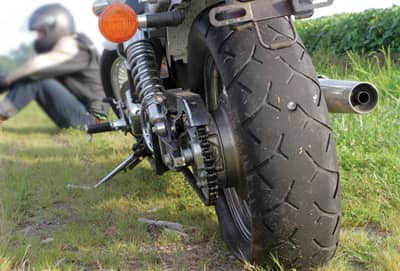Flat tire! It hasn’t happened to me yet, but give it time, I’m sure it will. I started wondering what I would do if I was on a motorcycle trip and found myself with a screw or nail in my tire.
I often travel alone and even though I have a motorcycle repair kit, I’m not sure I know how to use it. It was a hand-me-down from a friend. Also, I’m not sure how long I can ride the bike after I plug the hole? Can I finish my trip? Do I need to find a motorcycle shop or gas station ASAP? So, I did a little research, and here’s what I learned.
Is it safe to ride on a plugged motorcycle tire?
Riding your motorcycle on a plugged tire is safe but only for a limited distance. Tire plugs are designed to be a temporary solution rather than a permanent repair. They will enable you to ride to the next available motorcycle repair shop and either replace the tire or get it properly patched and plugged.
Well, wait a second.
There’s actually a lot more to it than a simple yes, it’s safe, or no, it’s not safe.
Motorcycle riders all have their own opinions about the topic. Some say it depends on the type of plug you use, how well it was installed, how far gone are the motorcycle tires anyway, what kind of riding are you doing, do you worry too much, etc. In my car, I’ve driven on a plugged tire for years with no issue whatsoever.
So, why wouldn’t this be true for a motorcycle tire?
I can see where there would be a difference in how the plug holds up considering the shape of a motorcycle tire. Going through a turn and putting stress on the side of the tire, may affect the way the plug holds or flexes. Personally, I consider a plug-in car tire as a “fix it and forget it” solution. But, I’m not sure I would forget it on my motorcycle tire.
Let’s look at some more details.
Types of Tire Plugs
In my research, I found that there are a few types of tire plugs available. They are all designed to be used in a similar fashion; plug up the puncture hole. All types of tire plugs can be used on your rear tire or front tire. But, they are not all equally effective.
Self Vulcanizing
Self Vulcanizing tire plugs are also known as strings, sticky strings, snot strings or worms. They are a strip of rubber material coated with sticky glue that will create a chemical reaction when placed in the puncture hole.
Vulcanization is a process in which the two rubber materials create chains or crosslinks on the molecular level, that binds the two together. It’s almost like the rubber plug and the rubber of the tire become one material. This is a very effective material to use for tire plugs.
String with Rubber Cement
Tire plugs made of rubber are not always self vulcanizing and kits with this type of plug will come with a tube of rubber cement. You will need to apply the cement to the rubber strip before inserting it into the tire. You will also need to wait until the cement dries completely before riding on the repaired tire.
This should only be about 15 minutes. These strips in combination with the rubber cement create a similar chemical reaction as vulcanization. It is an effective method for plugging a tire. It doesn’t matter if it’s the rear tire or front tire.
Mushroom Plugs
A mushroom plug is a bit of a rubber shaft with a mushroom shape at one end (no dirty jokes please). Many riders refer to them as Stop and Go plugs, which is a popular brand for this type of plug. The end with the…errr…mushroom tip, goes on the inside of the tire creating a better seal around the puncture hole from the inside. This reduces the chances of the steel wall fraying at the site of the puncture.
Mushroom plugs are good enough to get you off the road, but they should not be considered a permanent fix. If you use these, I would recommend having your tire professionally repaired or replaced as soon as possible. Stop and Go manufacturers recommend you do not exceed a speed of 50 mph, or 100 miles of travel.
How to Install a Tire Plug
Tools Needed For Installing a Tire Plug
You can purchase a motorcycle tire repair kit that comes with everything you need and they are not very expensive. You can go with minimalist repair kits, or you can get a more elaborate kit with extra gadgets and a handy carrying case. But, since we are talking about motorcycle travel, it’s probably a good idea to keep your tire repair kit to a minimum.
Here’s a list of items that you will need to plug a tire:
- Plugs – strings, sticky strings, whichever you choose
- Insertion tool – An Insertion tool is pretty standard in most kits.
- T-Handle tire reamer – a T-handle is much easier to work with than a standard straight handle
- T-Handle plugger
- Small tube of rubber cement (if you don’t use sticky strings)
- Multitool or pliers to pull out whatever stuck in your tire
- Inflation method – either CO2 cartridge system or an air compressor
My recommendation on what to use to inflate your motorcycle tires is an air compressor. There are some great compact and portable compressors on the market that will plug into your battery pre-wire lead. They are small enough to fit in your panniers and don’t add too much extra weight and are so important to make sure air pressure is correct.
Having that peace of mind is a good compromise for the extra gear. CO2 cartridges work fine, but you will have to use several cartridges to inflate your tire fully. If your tire has a slow leak after your repair, you will need more cartridges to keep it properly inflated. These are not a reliable option if you are miles and miles from services. So, in my opinion, a portable air compressor is the way to go.
DO NOT use a spray type tire filler like fix-a-flat on a motorcycle. Don’t do it. It may be ok for a quick fix on a car tire, but it will cause your motorcycle tire to become out of balance. Your wheel will wobble at high speeds and we all know, that’s a bad thing. An Insertion tool on a pocket tire plugger is something worth investing in as you don’t need to really replace this item.
Best motorcycle tire repair kit
Here are my recommendations when it comes to the best motorcycle tire repair kits:
Best Tire Repair Kit – BikeMaster Tire And Tube Flat Repair Kit
Replacement Tire Plugs – BikeMaster Replacement Plugs
A pocket tire plugger is also a fantastic tool to have on hand as well as your motorcycle tire repair kits!
Now that you have the tools and materials needed for a puncture repair, let’s look at how it’s done.
Plugging A Motorcycle Tire – Step By Step

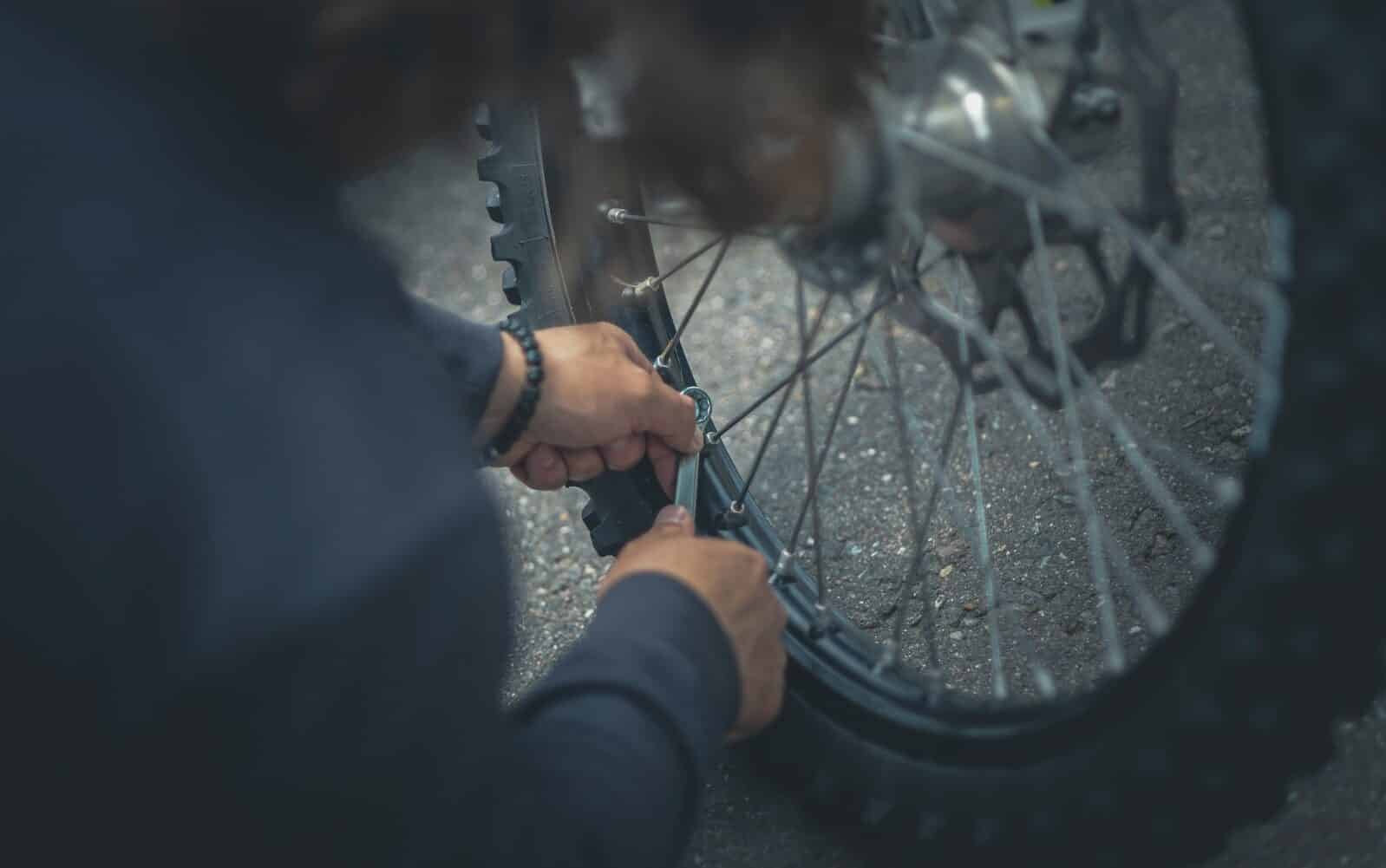
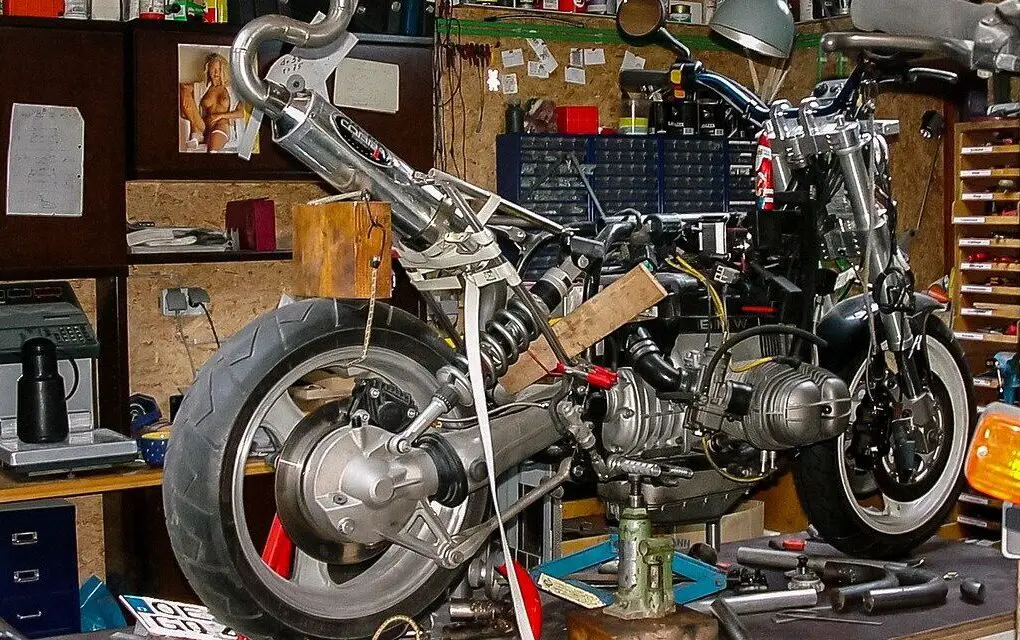
- Get all of your tools out and ready to go before you remove the offending object.
- Place a rubber plug through the opening at the end of the plugger, like threading a needle.
- Remove the screw or nail with your multi-tool or pliers.
- Insert the tire reamer into the puncture and move it back and forth 5 or 6 times. This will smooth out the rubber and the steel belt inside the tire.
- Apply rubber cement to the plug if you’re not using self vulcanizing plugs.
- Push the plugger with the plug into the puncture hole until the ends of the plug are almost all the way in. They should be sticking out slightly.
- Pull the plugger out of the puncture hole quickly and do not twist. The rubber plug will remain in the hole.
- Use a knife to trim off the excess rubber. Get it as even to the surface of the tire as possible. It’s doesn’t have to be neat.
- After trimming, check for leaks with soapy water and a good mouthful of spit.
- Wait 15 minutes for the glue to set and check for leaks one more time before riding.
It’s a fairly straightforward process and although I’ve never had to do it myself (yet), I’ve heard it takes some good effort to insert the reamer and the plugger into the tire. This is the reason why having tools with a T-handle is better than the straight handle like a screwdriver. You’ll be able to apply more force to the tool. And, let’s hope you don’t have to fix a tire in the middle of the desert on a 100 degree day.
Monitoring Your Fix
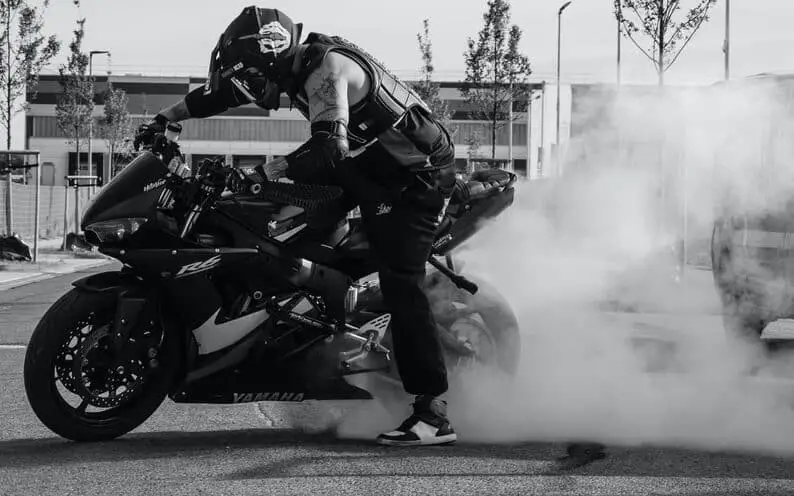
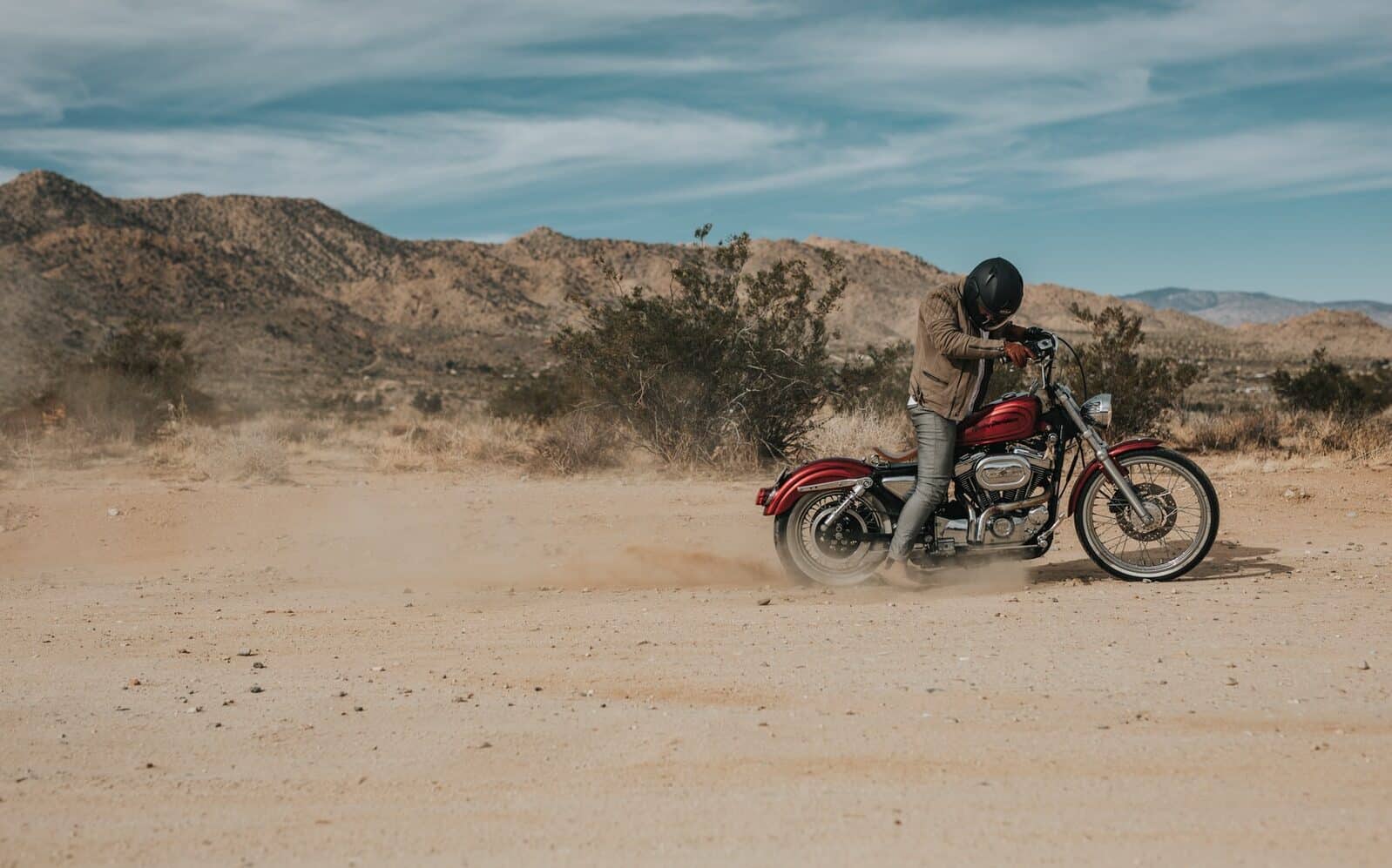

Since tire plugs are always considered a temporary fix, they should be monitored closely.
Check your tire after 10 miles of riding.
Check it again after 50 miles, then again after 100 miles.
Then, check it again the next morning to see if it held overnight. If you get past 400 or 500 miles and the plug is showing no signs of movement around the edges, or no leaks, then you can make the decision on whether or not to ride it for the life of the tire or get it replaced at the next opportunity.
This is a personal decision based on how much risk you want to take. I am in no way telling you that you should ride that tire until it’s worn or that the plug is going to hold for the life of the tire. You need to decide that for yourself if you want to keep riding on them or get a new tire.
If you decide to keep the tire with the plug, make sure you check that tire on a regular basis and be diligent about doing so. At the first sign of it losing air, or showing strange signs of wear or anything suspicious around the plug, replace the tire. Err on the side of caution.
Also, remember that whatever you use out of your repair kits will need to be re-stocked. A motorcycle tire repair kit is a lifesaver on a long trip.
Conclusion
I hope this article has helped you with understanding the safe way to fix your flat tire while on the road and how to stay safe after the repair. I know it’s helped me in writing it. I plan to upgrade my tire repair kit by getting some tools with t-handles and self vulcanizing plugs.
Ultimately, anyone going some distance with a motorcycle, getting a good plug kit is just smart. And with the information above, hopefully, you feel a little more informed as to how much riding you’ll do on a plugged tire. I would always opt for just buying a new tire as soon as the opportunity arises, but that’s me playing it safe.
If you perform a motorcycle service often then ask your mechanic about the plug.
Just remember, at all times your front or back tire is the only rubber that’s connecting you to the road!

